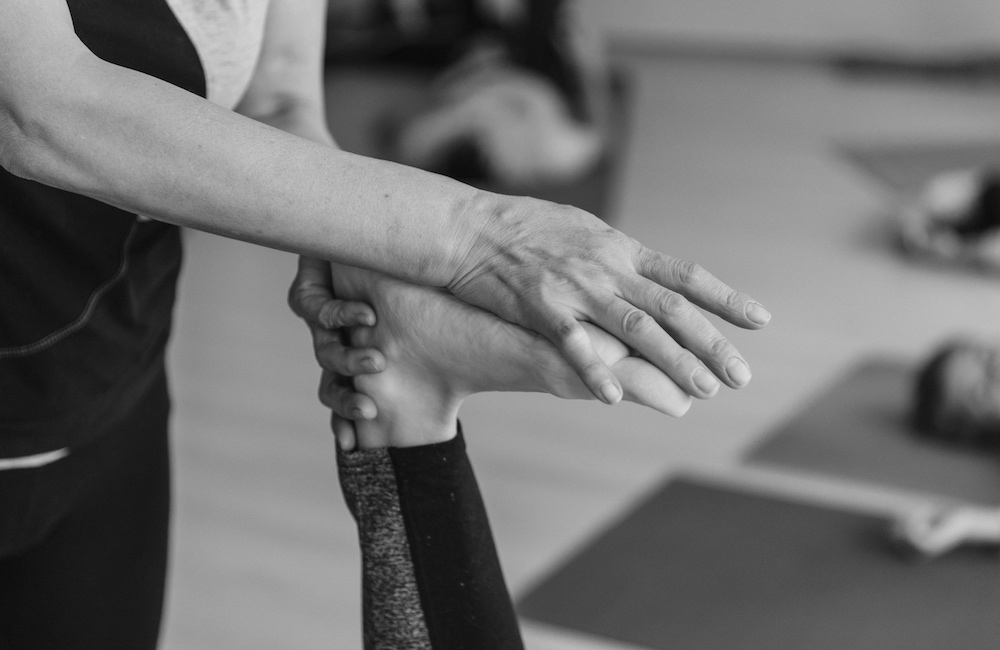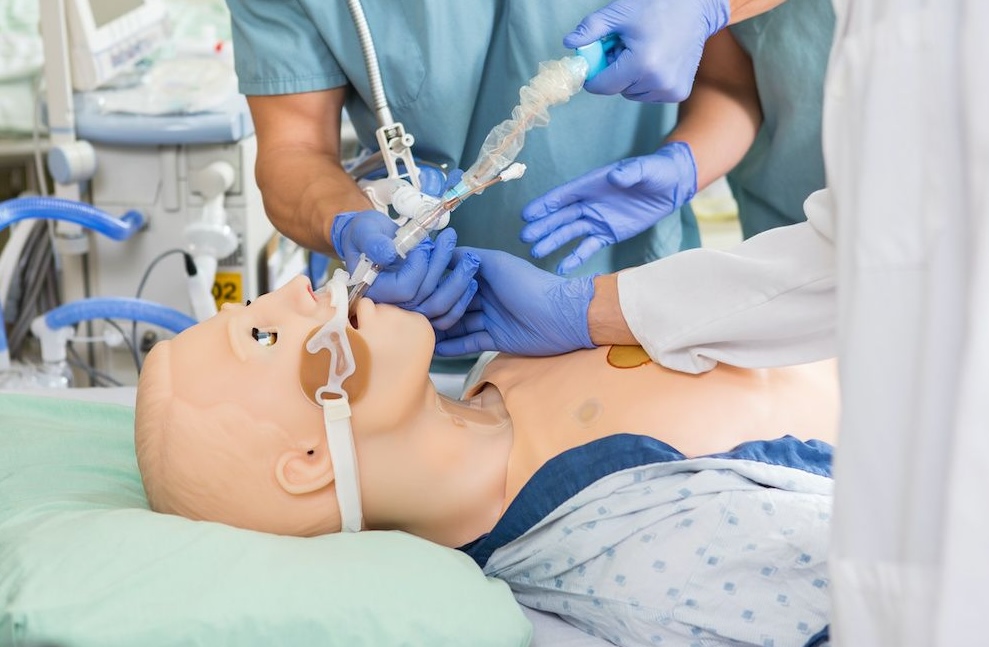Interprofessional Education (IPE) is a commonly used method for the inculcation of important interprofessional knowledge, skills, and attitudes regarding future healthcare providers. IPE is not a novel phenomenon despite the method’s growing interest. The World Health Organization is likely credited with igniting the recent push toward the inclusion of IPE as an expected aspect of healthcare professions curricula. This HealthySimulation.com article written by Jill Sanko explains the benefits of IPE and shares how interprofessional education simulation can incorporate physical therapy to establish impactful learning scenarios and outcomes.
Although nursing and medical education have demonstrated a more well-established commitment toward developing nurses and physicians with IPE competencies, physical therapy education has lagged behind. The slower uptake may be responsible for the common situation where nursing, medicine, and physical therapy learners have displayed a poor understanding of the roles of one another and how each makes unique and overlapping contributions to the interprofessional team.
However, simulation-enhanced IPE education can be a very effective method for imparting IPEC competencies. When this includes physical therapy (PT) alongside other disciplines, certain considerations need to be taken to ensure that all learners are able to gain knowledge and skills. Achieving well-balanced simulation scenarios and activity objectives requires careful planning by a representative team of educators who have a strong comprehension of the roles and knowledge possessed by the other disciplines.
A failure to understand what others do, and how they contribute to comprehensive patient-centered care will result in learners who do not feel considered within the educational plan. Generally, objectives centered on “common ground” goals required for teamwork and team-based practice can serve as easily attainable goals because they are not tied to specialty-specific credentials.
These include the promotion of an understanding of roles and responsibilities, development of abilities needed for effective interprofessional communication and collaboration, improved appreciation for alike and unique values and ethics, and expansion of non-technical skills. These all tightly align with the IPEC competencies as well.
Following the objective setting, the next vital planning consideration is the healthcare simulation scenario itself. There are several directions that educators should take. One direction is to select an activity or simulation scenario that is an ‘even playing field,” (i.e. meaning the simulation activity does not require specific clinical knowledge or skills).
Examples of Successful Healthcare Non-Clinical Specific Simulation Activities
Healthcare simulation activities that are non-clinically tied that have demonstrated success include “Friday Night at the ER” (a table-top simulation team learning game that teaches systems thinking), “Dwell” (a table-top simulation game that teaches about the impacts of poverty on health and health-related decisions), the Airplane game (teaches systems thinking), the Mr. Potato head PDSA activity (an activity focused on teaching the merits of the PDSA cycle), and the Lego Communication Challenge.
An alternate direction is to use clinically-based scenarios. Going this route will require careful consideration as to the storyline, setting, and opportunities for all participants to play an active part that mirrors their professional role. Failure to carefully create a well crafted that considers the knowledge and skills of all learners’ activity will result in learners feeling like they were not considered, were left out, or were unimportant to the educators if they cannot fully participate in a meaningful manner.
Reflections From the Author: Clinical Simulation Scenario Examples
In conducting these healthcare simulation scenarios, I have learned that most learners and educators come into these experiences with a generally good grasp of the roles, knowledge, and skills of physicians and nurses. Yet, where understanding tends to get a little muddled is when considering the roles, knowledge, and skills of PT. Unless physicians and nurses have had close involvement working with PTs, they often fail to have a complete and full comprehension of what PT knows and how they can contribute as part of an interprofessional healthcare team.
As I started working with PT conducting IPE, I found what learners were coming to understand about each other very interesting. Most eye-opening, were what nursing and medicine learned about PT’s knowledge and skills. Prior to doing IPE simulations together, many nursing and medical students understood the main knowledge and skills of PTs as limited to musculoskeletal system issues and conditions, and primarily assistance with patient ambulation and restoration of mobility following a musculoskeletal injury.
While these do constitute some of their know-how and abilities, this represents a fraction of their knowledge and skills and how they use these in the course of patient care. Students were surprised to come to understand that PTs work across the healthcare spectrum including in many inpatient settings including emergency departments and critical settings, as well as outpatient settings and rehabilitation facilities. Students also came to learn that PTs work across the lifespan from newborn onward.
Through our IPE efforts, our medical and nursing student learners became aware that PTs have specializations including geriatric, pediatric, cardiac, and urological /gynecological to name a few, and were able to assess pain, breathing, and cardiovascular parameters as well as many other physiological metrics. Moreover, quite a few were amazed to see a PT student read an electrocardiogram tracing, interpret lab values, recognize deteriorating / normal vital signs, and respond appropriately to a decompensating patient’s condition.
Even myself and my co-faculty educators from nursing and medicine gained information to assist in closing our own knowledge gaps around the roles, knowledge, and skills of our PT colleagues. The experience of working in an interprofessional educational endeavor to build appropriate simulations that included nursing, medicine, and PT turned out to be a powerful professional development opportunity.
After the experience, all of us left with a deeper appreciation of the roles and contributions our PT colleagues make that help to promote positive holistic patient outcomes. I personally feel much more able to speak to the importance of the role of PT in every aspect of healthcare and now strive to educate others on the importance of bringing PT into all interprofessional educational opportunities as well as onto healthcare teams.
Takeaways from the IPE Simulation Experience
After our discovery of the gaps in knowledge among our students around the PT’s roles, skills, and knowledge we were inspired to explore how and if this deficiency translates into practice settings. Through a survey sent out to several PT organizations, we learned that many PTs are not able to fully work to the top of their license due to ignorance of the myriad of ways they can contribute to healthcare.
At a practical level, this means missed opportunities for important healthcare providers to utilize their full abilities and in turn for patients to benefit. This finding underlines why pre-licensure education is so vital. If educators can instill in future providers knowledge about the other, they will be more likely to value the contributions of the full cadre of providers that exist and invite them onto the healthcare team when out in practice. In this way, patients benefit from the expertise of a full team of providers replete with complementary abilities to aid in their care that moves them toward the restoration of full health.
For those who plan to embark on IPE simulation that includes PT, they must use clinically relevant scenarios which provide rich opportunities for all learners to have active roles. Consideration needs to be taken to prior experience with simulation. I recently learned that only about 30% of PT schools have clinical simulation spaces.
Initial experiences should include those that take place in phases representing simple cases and follow-through scenarios (i.e. start in one setting, move to another; start in one state of health, move to another) where PTs have the ability to do their own assessments/ tasks and then collaborate with others in later phases.
This method can also help in providing a learner who is newer to simulation an opportunity to gain familiarity with healthcare simulation before engaging in more fast-moving or complex scenarios. SP simulation may work better than manikin-based simulation because much of PT involves movement. SPs move better than manikins, but manikins can work too.
Additionally, discharge and rehabilitation planning represent powerful learning experiences due to the unique perspectives shared by each discipline and the wealth of knowledge PT has on these subjects. After a foundation has been built, emergency events and faster-paced complex scenarios can occur. One tactic is to have a patient deteriorate during physical therapy.
In this way, a scenario focused on interprofessional code team response can occur. Non-clinically specific simulations also work well as discussed above.
The sky is really the limit given that PTs contribute are across healthcare. The most important thing to remember is to collaborate closely with PT colleagues in writing scenarios, planning activities, and debriefing – and, of course, do more IPE with PT.








